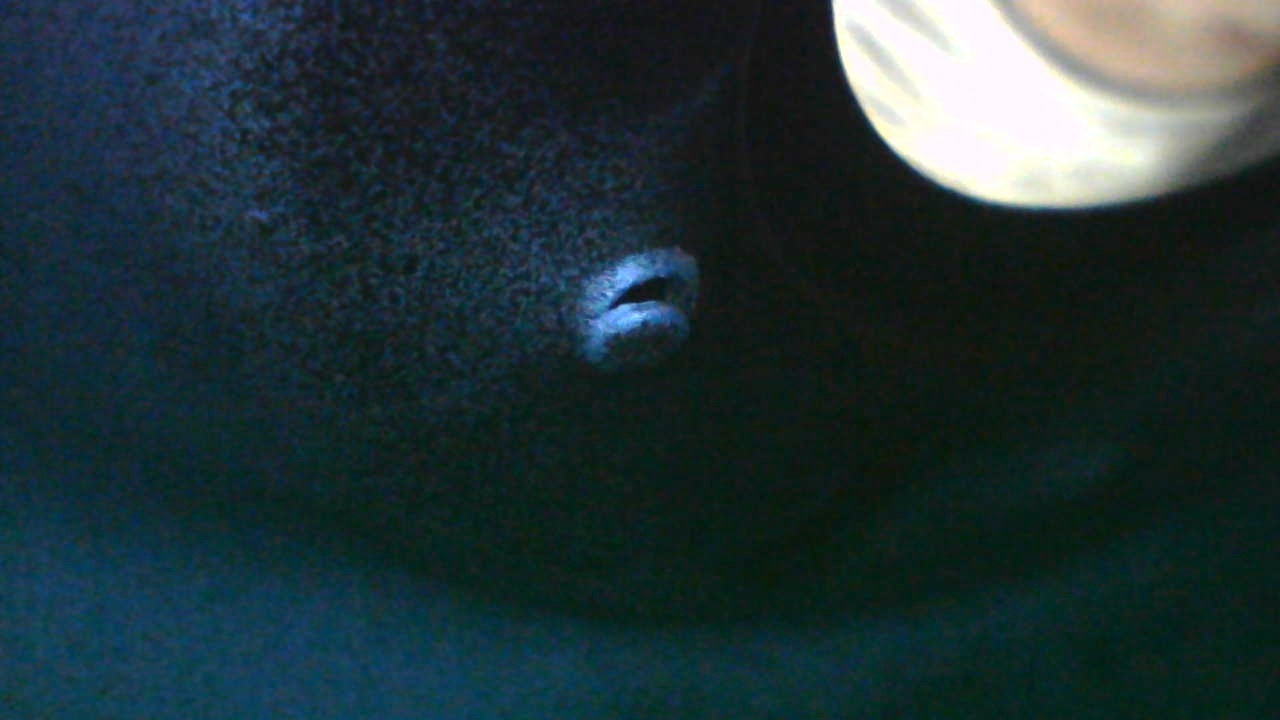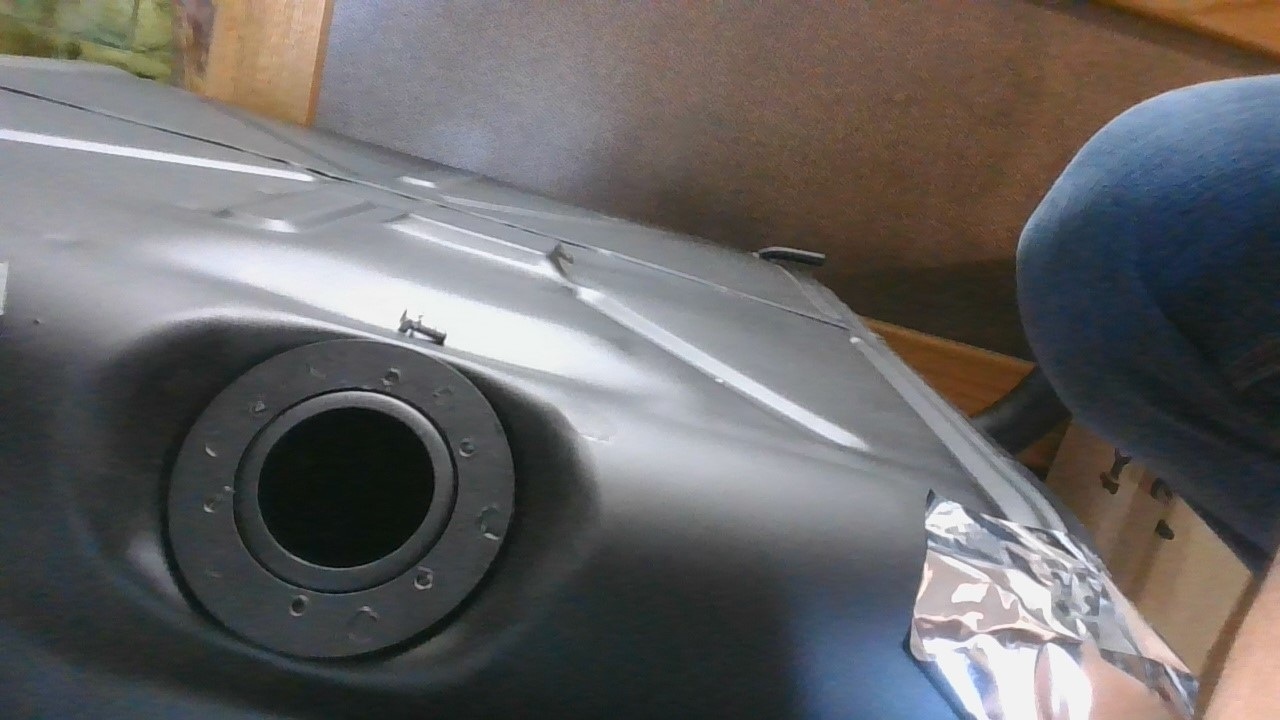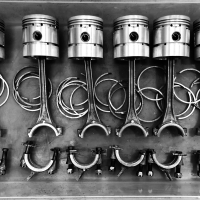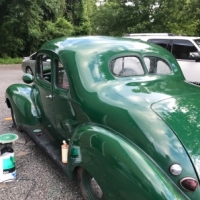New fuel tank mess
I have just made a mess out of my new Stepdown fuel tank. It always irks me when someone sells a part that needs bolts of a specific depth, or rare thread and doesn't supply them (for an additional cost that I would happily pay). I also wasted a lot of time figuring out the thread (which the vendor couldn't tell me). Thus, I have the wrong bolts with the right threads.
The bolts that I purchased were too long. It being 100°+F outside, I was absent-minded and forgot to grind them down 1/8". The ugly result is that in the course of installing the fuel sender unit I have punched through the tank as seen in the first picture taken with a cheap camera scope. The other locations are heavily dented in and weakened, but only one breach has been confirmed.
Note that the flange is not sealed to the tank so simply punching through and putting thread sealer on the bolts will not prevent leakage between the flange and the tank.
What is the best course to mitigate this? A gasoline-proof epoxy pushed into the bottom of each well?
Thank you for your thoughts.


0
Comments
-
I hear your pain... I was looking for stainless steel screws to replace the rusted ones on my sedans fuel sending unit & pickup tube. I have found 99% of what I have needed at the local Ace Hardware except those. They turned out to be an odd size but fortunately my local fastener specialty store had them. These things can indeed be challenging, try to grab a break when you can or when it’s just not working, sometimes it helps.0
-
As I understand it your new screws, probably just finger tight, readily screwed most of the way into the new tank threads?
You started to feel resistance before the screws were fully home?
Rather than back the screws out and investigate the reason for the resistance you thought applying more force to the screws would be the best course of action?
Two ways to 100% fix the hole(s). One is to TIG weld the flange to the tank, ID and OD, distortion of the gasket surface is a possibility. The other is to remove the flange, TIG weld the damage, replace the flange.0 -
The new tank thread is #10-24. I was installing the sender with the cork gasket. There was paint in the threads. I expected *some* resistance. Quite frankly, until I got a closer look at the flange I thought they went all the way through with only paint in the way. The past is irrelevant and not helpful. "Should have" does me no good.No, the vendor is not to blame, but if they have been helpful by providing a few cents worth of screws I wouldn't have messed this up and life would be nicer. I couldn't find the right length when I bought the screws and forgot to shorten them.Welding the flange to the tank is a way to stave off this issue in the future if too long a bolt is used. It didn't take much force to pull this off - I used a screwdriver with a socket.0
-
Ace, tru value, etc almost always have a nut and bolt selection. I have found 10-24 stainless button head screw always available in a variety of lengths from 3/8" to 3/4" or longer, about 40cents each. 10-32 also bought some yesterday0
-
If you aren’t 100% positive on the screw being a 10-24 thread, take a look at the #12-24 x 12” Pan Head Stainless Screw. That’s what my original tank took on my 37 Hudson sedan. Original I thought it was a 10-24 but didn’t want to force it & screw up threads which was when I started my search & found the above screw. Just an FYI in case you need it.0
-
Can you use “Indian head shellac” on the screw hole that went into the tank? I have used it with good results. I can’t make out if you punched through the cup? It’s a little hard to see on my phone..0
-
I punched through the cup. This project is going on back-burner.Having a threaded-through flange on top of a tank, but not sealed to it seems like a really bad design idea to me. My mistake was in purchasing hex-head screws that were too long and tightening them down. The button head screws (slot or Phillips) of the "top" of the sender unit are a real pain to get to when the tank is in place, so hex-screws were my "upgrade."0
-
-
Right. I have the correct length on order.
0
Categories
- 36.6K All Categories
- 85 Hudson 1916 - 1929
- 11 Upcoming Events
- 73 Essex Super 6
- 28.4K HUDSON
- 511 "How To" - Skills, mechanical and other wise
- 990 Street Rods
- 150 American Motors
- 170 The Flathead Forum
- 47 Manuals, etc,.
- 71 Hudson 8
- 40 FORUM - Instructions and Tips on using the forum
- 2.7K CLASSIFIEDS
- 592 Vehicles
- 2.1K Parts & Pieces
- 76 Literature & Memorabilia
- Hudson 1916 - 1929 Yahoo Groups Archived Photos




